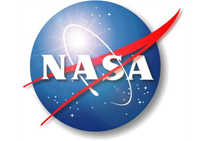NASA Planetary Division Management Responds to Community Concerns

James L. Green, Director, Planetary Science Division
The President’s FY13 budget for the Planetary Science Division (PSD) was reduced by 21% from its FY12 level. This reduction has not been equally distributed throughout the program. For instance our flight programs have taken the greatest reduction with the withdrawal of significant NASA participation in ESA’s Mars 2016 and 2018 missions, and significant changes in the Discovery and New Frontiers flight rates. It is a fact that a reduction in Planetary Division funding will reduce science with the additional expectation that there will be increased proposal pressure in many of the Research and Analysis (R&A) programs as missions wind down with no new mission selections and participating scientist calls to take their place.
The projected R&A funding for FY13 is planned to be $228M, which is more than 19% of the entire Planetary Science budget (a historic high percentage). The PSD is following closely previous recommendations and findings of the Planetary Science Subcommittee (PSS) to better manage its R&A program consistent with funding constraints while addressing critical R&A issues such as slow notification and budget stability. It is important to note that NASA is currently being funded under a continuing resolution whose procedures are to provide partial funding at regular intervals. Therefore, many of the PSD Program Officers (PO) do not currently have all their R&A program funding to meet their current commitments and selections. To take this situation into account, the following are the PSD R&A management principles:
1. FY13 funding targets have been provided to all program officers (PO) for each of the PSD ROSES program elements.
2. All POs will meet current ongoing grants commitments before new selections can be made.
3. Awards will be made and announced beginning one month after the review panels have met.
4. Section announcements will be either: selected, notselected, or selectable.
5. Proposals in the selectable category will be selected as funding becomes available throughout the fiscal year. This means that selection rates for a program will increase as additional selections are announced.
As an example, recent selection announcements in the Planetary Astronomy and Planetary Atmosphere R&A programs did not report the “selectable” letters that went out to many proposers that would be funded as funds become available later in the year.
Contrary to statements being made by some individuals in the science community, the recent announcement of the Mars 2020 rover has nothing to do with the current R&A selection rates nor has it impacted the current or projected amounts to be spent in the R&A program. The Mars 2020 rover will be designed to “conduct mobile surface-based science at a site selected for its ability to preserve evidence of life, and prepare for the future return of samples per the NRC Planetary Decadal Survey.” A call for the membership of the Science Definition Team (SDT) for the Mars 2020 rover has just been release. For more information on this SDT please see:








